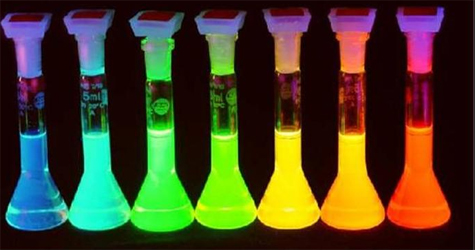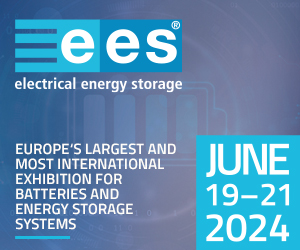Surprising breakthrough could bolster quantum photonics, solar cell efficiency.
February 8, 2013
Scientists from the U.S. Department of Energy’s National Renewable Energy Laboratory and other labs have demonstrated a process whereby quantum dots can self-assemble at optimal locations in nanowires, a breakthrough that could improve solar cells, quantum computing, and lighting devices.
A paper on the new technology, “Self-assembled Quantum Dots in a Nanowire System for Quantum Photonics,” appears in the current issue of the scientific journal Nature Materials.
Quantum dots are tiny crystals of semiconductor a few billionths of a meter in diameter. At that size they exhibit beneficial behaviors of quantum physics such as forming electron-hole pairs and harvesting excess energy.
The scientists demonstrated how quantum dots can self-assemble at the apex of the gallium arsenide/aluminum gallium arsenide core/shell nanowire interface. Crucially, the quantum dots, besides being highly stable, can be positioned precisely relative to the nanowire’s center. That precision, combined with the materials’ ability to provide quantum confinement for both the electrons and the holes, makes the approach a potential game-changer.
Electrons and holes typically locate in the lowest energy position within the confines of high-energy materials in the nanostructures. But in the new demonstration, the electron and hole, overlapping in a near-ideal way, are confined in the quantum dot itself at high energy rather than located at the lowest energy states. In this case, that’s the gallium-arsenide core. It’s like hitting the bulls-eye rather than the periphery.
The quantum dots, as a result, are very bright, spectrally narrow and highly anti-bunched, displaying excellent optical properties even when they are located just a few nanometers from the surface – a feature that even surprised the scientists.
“Some Swiss scientists announced that they had achieved this, but scientists at the conference had a hard time believing it,” said NREL senior scientist Jun-Wei Luo, one of the co-authors of the study. Luo got to work constructing a quantum-dot-in-nanowire system using NREL’s supercomputer and was able to demonstrate that despite the fact that the overall band edges are formed by the gallium Arsenide core, the thin aluminum-rich barriers provide quantum confinement both for the electrons and the holes inside the aluminum-poor quantum dot. That explains the origin of the highly unusual optical transitions.
Several practical applications are possible. The fact that stable quantum dots can be placed very close to the surface of the nanometers raises a huge potential for their use in detecting local electric and magnetic fields. The quantum dots also could be used to charge converters for better light-harvesting, as in the case of photovoltaic cells.
The team of scientists working on the project came from universities and laboratories in Sweden, Switzerland, Spain, and the United States.
NREL is the U.S. Department of Energy’s primary national laboratory for renewable energy and energy efficiency research and development. NREL is operated for DOE by the Alliance for Sustainable Energy, LLC.
Visit NREL online at www.nrel.gov








